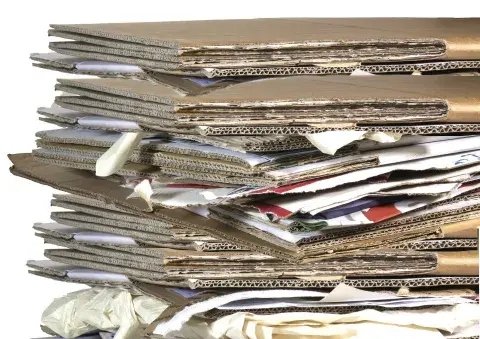
You have likely heard about the supposed death of recycling in recent years. But have you heard that recycling is actually thriving again? If this comes as a surprise to you, you’re not alone. I recently read a local article with outdated and inaccurate information about recycling markets. So I thought I’d set the record straight. As a bonus, I’ll tell you the single most valuable item in your recycling bin today. The answer may surprise you.
It’s true that China used to be a major global purchaser of recyclables until it implemented a ban in 2018 that led to a dramatic disruption and decrease in pricing worldwide for many recyclable materials. As a result, some communities across the United States stopped recycling due to increased costs, including in New Hampshire. This bad news traveled fast. However, the less exciting truth is that the vast majority of New Hampshire communities continued steadily recycling even after China’s ban.
Then, in the beginning of the COVID-19 pandemic, recycling markets began to improve. In April and May 2020, the price of cardboard increased noticeably. Why? When businesses and schools suddenly shut down, the steady supply of high-quality cardboard they generated evaporated. That left cardboard from residential recycling programs (like your cardboard Amazon boxes) in high demand to fill the needs of mills that create recycled paper products. And more recently, cardboard pricing has continued to climb steadily, along with other paper products since those typically follow cardboard pricing. Why? As the economy began to improve after the COVID-19 vaccine became available, there’s been increased demand for consumer goods. Many of those goods are shipped in cardboard boxes.
Plastics pricing has also improved in recent months. The price of oil is up, as you’ve no doubt noticed at the gas pump. Higher oil prices make recycled plastic more attractive as material for manufacturers because virgin plastic is derived from oil. But when oil prices go down again, plastic pricing will likely also decrease. Another reason for plastic prices increasing can be attributed to sustainability pledges from major consumer brand companies. Responding to bad press about plastic recycling in recent years, companies like Coca-Cola, PepsiCo, and others promised to increase the amount of recycled material used in their packaging. Those pledges finally seem to be leading to increased demand and therefore increased pricing for some plastics.
But you might be surprised to learn that the most valuable item in your recycling bin, by weight, is your translucent milk jug (or in another month or two, your apple cider jug). These plastics, which are called Number 2 HDPE Natural, are selling at record high prices. Why? Number 2 HDPE Natural is versatile and can be turned into a wide variety of products of any color. Communities that source separate and recycle Number 2 HDPE Natural plastics are currently getting paid over a dollar per pound for this material. In the recycling industry, this is big news. Though keep in mind that recycling markets are like stock markets, which go up and down, so this snapshot in time I’m sharing will inevitably change in coming months.
So what does this improvement in recycling markets mean for local communities in New Hampshire? Communities that have single or dual stream recycling (where all your recyclables are placed into one or two bins) are seeing decreased costs for recycling. Communities that fully separate out all their recyclables are receiving increased revenue from the sale of those recyclables.
As the executive director of the Northeast Resource Recovery Association (NRRA), a recycling nonprofit that helps communities manage their own recycling programs and sell their recyclables, I’ve had the pleasure of signing increasingly large checks to our member municipalities that source separate this summer. Collectively, over 80 percent of towns and cities in New Hampshire are members of NRRA, and last year we returned over $1.8 million to our members from the sale of their recyclables. The environmental impact of that recycling in 2020 was the equivalent of removing 21,923 passenger cars from the road for an entire year.
So the next time you hear someone talking about how recycling is broken or not worth it, or if you read something to that effect, I hope you’ll consider sharing this information with them. At a time when it sometimes feels like there’s nothing but bad news, it’s nice to spread the good news that recycling is thriving in the Granite State.
Reagan Bissonnette is executive director of the Northeast Resource Recovery Association.
